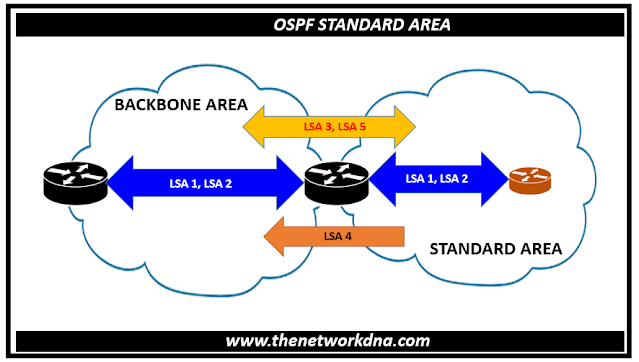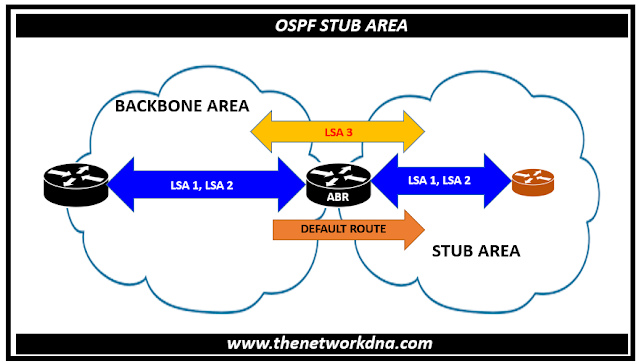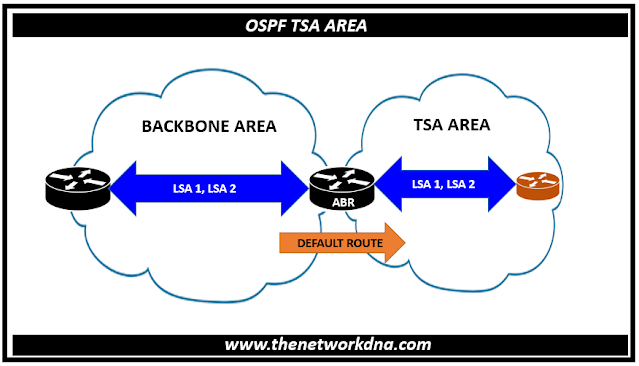Introduction to OSPF Area Types
Introduction to OSPF Area Types
OSPF (Open Shortest Path First) is a routing protocol that establishes routing paths within a network. In an OSPF network, regions are used to organize logically related routers. Ideally, all areas should be physically connected to the backbone (Area 0), which serves as a centralized point for routing information.
⭐Related : Top OSPF Protocol Interview Questions and Answers
⭐Related : OSPF protocol : OSPF Packet Types
What is OSPF Area Types ?
OSPF Area is a concept to divide a large network into smaller logical domains. This helps with scalability and reduces the size of routing tables on routers. Routers in the same area must have identical link-state databases (LSDBs).
Fig 1.1- OSPF Area Types
The key advantage of constructing regions is that it reduces the number of routes to propagate through route filtering and summarization. There are different types of OSPF Areas as:
- Backbone Area
- Standard Area
- Stub Area
- Totally Stubby Area
- Not-So-Stubby Area (NSSA)
- NSSA Totally Stub Area
OSPF Backbone Area
- The backbone area, also known as Area 0, serves as the base for an OSPF network. It connects every other area.
- All non-backbone areas must be directly connected to the backbone area (either physically or through virtual links).
- Backbone areas are not partitionable, keeping network connectivity irrespective of failures.
OSPF Standard Area
- A standard area in OSPF is the most basic and unrestricted type of area within an OSPF network.
- By allowing all LSA types, standard areas have a complete picture of the routing topology within their area and can calculate the best paths for data packets.
OSPF Stub Area
- A stub area does not allow external routes (routes from outside the OSPF domain) to be advertised within the area.
- External routes are summarized at the area border router (ABR) before entering the stub area.
- This simplification reduces the complexity of routing calculations for routers in the stub area and keeps their routing databases smaller.
- An Area Border Router (ABR) injects a default route (typically 0.0.0.0) into the stub area. Routers in the stub area use this default route to reach any external network.
OSPF Totally Stubby Area (TSA)
- In OSPF, a Totally Stubby Area (TSA) is a specialized area type that takes stub area functionality a step further to achieve even stricter limitations on routing information.
- Totally Stubby Area allows only LSA Type 1 and LSA type 2
- Blocks external routes LSA Type 5 and also prevents Type 3 LSAs (summary LSAs) from being advertised into the area.
- Totally Stubby Area depends on an Area Border Router (ABR) for reaching external destinations. The ABR injects a default route (typically 0.0.0.0) into the TSA. Routers within the TSA use this default route to forward any traffic for unknown networks to the ABR for further routing.
OSPF Not-So-Stubby Area (NSSA)
- In OSPF, a Not-So-Stubby Area (NSSA) provides an intersection between the ease of a stub area and the complete information flow of a standard area.
- They block Type 5 LSAs (External Link-State Advertisements) from other OSPF areas. This prevents internal routers from being flooded with unnecessary external route information.
- They allow the advertisement of specific external routes within the NSSA itself. These routes are advertised using a special LSA type: Type 7 (NSSA External LSA).
- The ABR translates the Type 7 LSAs from the NSSA into standard Type 5 LSAs (External Link-State Advertisements) and vice versa for External communication.
OSPF NSSA Totally Stub Area
- In OSPF, a Not-So-Stubby Totally Stub Area (NSSA Totally Stub Area) combines features of both NSSA (Not-So-Stubby Area) and Totally Stub Area (TSA), offering a unique area type with specific functionalities
- Similar to a TSA, routers within an NSSA Totally Stub Area primarily have knowledge of LSA Type 1 and LSA Type 2.
- They can additionally learn about specific external routes advertised as Type 7 LSAs within the area.
- However, they are completely isolated from information about other OSPF areas due to the blocked Type 3 LSAs.
- The ABR injects a default route (typically 0.0.0.0) into the area.
- ABR translates Type 7 LSAs from the NSSA into standard Type 5 LSAs and floods them into other appropriate areas, allowing external reachability for the advertised routes.
Continue Reading...
- OSPF Show Commands on Cisco, Juniper, Huawei, HP and Arista Networks devices
- How to Optimize Your MPLS VPN with OSPF Sham-Link
- OSPF protocol : OSPF Packet Types
- OSPF NSSA Area introduction and Configuration
- Facts about DR and BDR selection in OSPF
- OSPF and BGP configuration setup on a vEdge Router
- OSPF Configuration Guide : OSPF Distance External Command Behavior
- A quick difference: OSPF Vs IS-IS Dynamic Routing Protocol
- Routing: Configuration OSPF To Filter Type-5 LSAs
- Introduction to OSPFv3 AS External LSA Route Calculation
- Differences between OSPFv3 and OSPFv2
- OSPF Over non-Broadcast Networks ( NBMA) basics and Configuration
- OSPF Configurations in Huawei Routers
- Quick tips to OSPF Routing Protocol for Network Engineers
- OSPF Basic configuration Step by step on Cisco Routers
- OSPF Basics : Simple points to study
- OSPF prefix-suppression- Configurations and Verification
- OSPF LSA-ID Conflict : %OSPF-4-CONFLICTING_LSAID
- Cisco IOS-XE: OSPF stuck in INIT - LLS TLV
- Configure Redistribution of iBGP Routes Into OSPF
- Cisco and Juniper Routers : OSPF point to multipoint configurations













